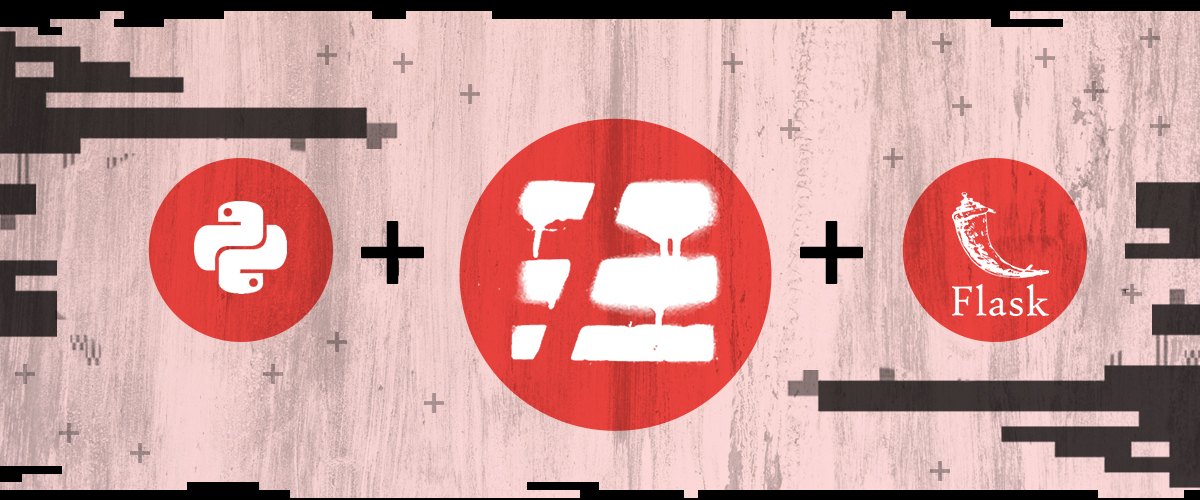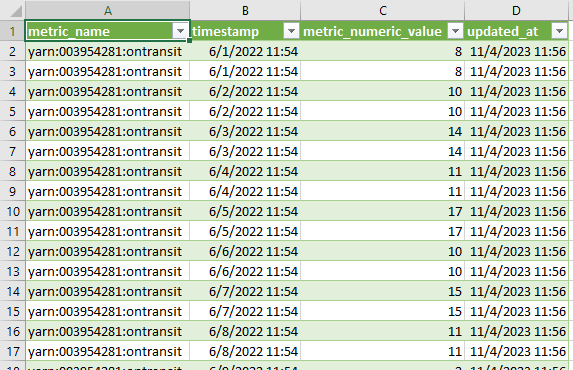Table of contents
- The importance of data integrity in business
- How correct to enhance data integrity
- Best practices for CSV formatting
- Tools and software for CSV formatting
- Steps to ensure data integrity through CSV formatting
- Follow a process to manage CSV formatting
- Case studies on the impact of correct CSV formatting
- Conclusion: The power of correct CSV formatting in improving data integrity
In today’s data-driven world, there’s no room for error when it comes to maintaining the accuracy and integrity of your data. One crucial aspect that can make a significant difference is the correct formatting of your CSV files. By mastering the correct formatting techniques, you can revolutionize how you manage your data and leave no room for chaos.
Correct CSV formatting guarantees that your data is organized, consistent, and error-free. It minimizes the risk of data corruption, duplication, or misinterpretation, empowering you to make informed decisions based on reliable information. By adhering to the proper CSV structure and layout, you can avoid frustrating data inconsistencies and save valuable time and resources.
Regardless of the type of information you are dealing with, mastering the art of CSV formatting is critical to elevate the credibility and efficiency of your data management processes. This article will delve into the best practices and techniques for achieving optimal data integrity through correct CSV formatting. Get ready to unlock the full potential of your data by embracing this powerful tool and take control of your data management processes with confidence.
The importance of data integrity in business
CSV (Comma Separated Values) files are widely used for storing and exchanging data because of their ease of use and compatibility across various platforms and software. However, incorrect formatting can lead to several issues that can compromise data integrity.
One of the most common issues is inconsistent data representation. Using inconsistent delimiters, such as combining commas and tabs, can lead to confusion and make it challenging to extract and analyze data accurately. Furthermore, inconsistent date and number formats can result in errors when calculating or sorting data.
Another issue is missing or extra data. Incomplete rows or columns can lead to missing information, making it arduous to analyze or interpret data correctly. Conversely, additional data in rows or columns can result in duplication or incorrect calculations, which can influence the results.
Lastly, encoding issues can occur when working with CSV files. Different software and systems may use different character encodings, leading to unreadable or garbled data. This can be a significant problem, especially when working with international characters or special symbols.
To ensure data integrity, it is crucial to follow best practices for CSV formatting.
How correct to enhance data integrity
In today’s fast-paced business world, data integrity is paramount to achieving success. Accurate and reliable data helps businesses make informed decisions, optimize resources, and seize opportunities. In contrast, poor data integrity can lead to missed opportunities and wasted resources, resulting in poor business performance.
This is especially true in the finance, healthcare, and e-commerce industries, where even minor inaccuracies can have significant consequences. For example, incorrect pricing information on an e-commerce site can lead to lost sales and dissatisfied customers. Similarly, inaccurate patient records in the healthcare sector can result in misdiagnoses or ineffective treatments, leading to severe consequences.
To ensure data accuracy and reliability, businesses must prioritize data integrity and implement proper formatting techniques. By doing so, they can make informed decisions, enhance efficiency, and gain better insights for strategic planning. Moreover, this approach can lead to improved customer satisfaction and strengthened trust in the business.
In conclusion, data integrity is critical to the success of any business. By prioritizing it, businesses can make more informed decisions, optimize resources, and gain a competitive advantage in their respective industries
Best practices for CSV formatting
CSV formatting is a crucial aspect of preserving the integrity of data. It establishes a standardized structure that is used to store and organize data, ensuring consistency and accuracy throughout the file. By adhering to the principles of proper CSV formatting, you can enhance data integrity in several ways.
Firstly, correct formatting makes data validation easy. By following a consistent structure, you can easily identify missing or extra data, guaranteeing that all necessary information is included and eliminating duplication. This validation process helps you identify potential errors or inconsistencies, allowing you to address them promptly and maintain data accuracy.
Secondly, proper formatting promotes seamless data integration. By adhering to a standard CSV format, different systems or software can exchange data smoothly and efficiently. This reduces the risk of data corruption or loss during integration, ensuring that the information remains reliable.
Furthermore, correct CSV formatting enables efficient data analysis. By structuring your data correctly, you can apply filters, perform calculations, and generate meaningful insights. This streamlined analysis process allows for more accurate reporting, trend identification, and informed decision-making.
In conclusion, correct formatting is essential for enhancing data integrity by enabling easy data validation, seamless data integration, and efficient data analysis. By formatting your CSV files correctly, you can unlock the full potential of your data and make better-informed business decisions.
Tools and software for CSV formatting
To ensure optimal data integrity, following best practices for CSV formatting is essential. These guidelines help maintain consistent and accurate data representation, minimizing the risk of errors or misinterpretation. Here are some important best practices to consider:
- Use a consistent delimiter: Choose a single delimiter, such as a comma, to separate values consistently throughout the CSV file. Avoid using other characters or multiple delimiters, which can lead to confusion and data inconsistency.
- Use quotation marks for text fields: If your data includes text fields that contain delimiters or special characters, enclose them in quotation marks. This ensures that the delimiters within the text are not mistakenly interpreted as field separators.
- Consistent date and number formats: Ensure that dates and numbers are formatted consistently throughout the CSV file. Choose a standard format and apply it consistently to avoid confusion or errors when performing calculations or sorting data.
- Include header row: Always include a header row that clearly defines the content of each column. This helps users understand the data structure and facilitates data validation and analysis.
- Avoid empty rows or columns: Remove any empty rows or columns from your CSV file. These empty elements can lead to data inconsistencies or misinterpretation during analysis.
- Handle encoding issues: Pay attention to the character encoding of your CSV file, especially when working with international characters or special symbols. Ensure that the encoding is correctly specified to avoid garbled or unreadable data.
By following these best practices, you can ensure that your CSV files are correctly formatted, promoting data integrity and facilitating efficient data management.
Retool workflow: ultimate step-by-step guide. From REST to Postgres
Step by step guide to integrate data from a REST API into a Postgres table with Retool workflows. This guide…
Steps to ensure data integrity through CSV formatting
While manually formatting CSV files is possible, it can be time-consuming and error-prone, especially when dealing with large datasets. Fortunately, several tools and software available can simplify and automate the CSV formatting process.
1. Microsoft Excel: Excel is a widely used spreadsheet software that offers powerful features for CSV formatting. It allows you to import and export CSV files, manipulate data, and apply various formatting options. Excel also provides built-in functions for data validation and analysis.
2. OpenRefine: OpenRefine is a free, open-source tool specializing in data cleaning and transformation, including CSV formatting. It provides a user-friendly interface for handling large datasets, allowing you to split, merge, or reformat columns, remove duplicates, and perform other data-cleaning tasks.
3. CSVLint: CSVLint is an online tool that helps you validate and format CSV files. It checks for common CSV formatting issues, such as inconsistent delimiters or missing headers, and provides suggestions for improvement. CSVLint also supports custom rules and allows you to export the validated CSV file.
4. Python’s Pandas library: If you are comfortable with programming, the Pandas library in Python provides powerful tools for CSV formatting and data manipulation. With pandas, you can read CSV files, apply various transformations, and export the formatted data to a CSV file.
These tools can significantly simplify the CSV formatting process, allowing you to focus on data analysis and decision-making rather than spending time on manual formatting tasks.
Follow a process to manage CSV formatting
Photo by Kaleidico on Unsplash
Follow a systematic approach when formatting CSV files to achieve optimal data integrity. By following these steps, you can ensure that your data is organized, consistent, and error-free.
- Identify the data requirements: Understand the specific data requirements for your project or analysis. Determine the necessary columns, data types, and any particular formatting guidelines.
- Prepare the data: Clean and preprocess your data before formatting it as a CSV file. Remove irrelevant or duplicate data, handle missing values, and apply appropriate transformations or calculations.
- Define the CSV structure: Based on the data requirements, define the structure of your CSV file, including the column names and their corresponding data types. Ensure that the structure is consistent and accurately represents the data.
- Format the data: Export your cleaned and preprocessed data into a CSV file using the defined structure. Apply the best practices for CSV formatting discussed earlier, such as using a consistent delimiter, including a header row, and handling special characters.
- Validate the data: Once the CSV file is formatted, perform a thorough data validation process. Check for missing or extra data, verify the data types are correct, and ensure the data aligns with the defined structure.
- Analyze and interpret the data: With the formatted and validated CSV file, you can proceed with data analysis and interpretation. Apply various techniques and tools to extract insights, identify patterns, and make informed decisions based on reliable data.
Following these steps, you can establish a robust CSV formatting process that ensures data integrity and efficient data management.
Case studies on the impact of correct CSV formatting
To illustrate the importance of correct CSV formatting in enhancing data integrity, let’s explore a few case studies where proper formatting significantly impacted an organization.
- E-commerce Pricing Accuracy: An online retailer struggled with pricing inconsistencies due to improper formatting of their product data. Prices were occasionally duplicated or incorrectly displayed, resulting in customer dissatisfaction and lost sales. By implementing proper CSV formatting guidelines, they could eliminate pricing errors, improve data integrity, and provide accurate pricing information to their customers.
- Financial Data Analysis: A financial institution struggled with unreliable financial reports due to inconsistent formatted transaction data. Inaccurate date/time formats and missing information in the CSV files made reconciling accounts and generating accurate reports challenging.
By implementing proper CSV formatting techniques, they were able to ensure data integrity, resulting in more reliable financial analysis and reporting.
These case studies demonstrate how correct CSV formatting can significantly impact data integrity and the overall performance of businesses across various industries.
Where to go next to be prepared
Mastering the art of CSV formatting requires knowledge, practice, and continuous improvement. Fortunately, there are various training and resources available to help you enhance your CSV formatting skills.
1. Online Courses: Platforms like Udemy and Coursera offer courses specifically focused on CSV formatting and data management. These courses cover topics such as best practices, advanced techniques, and hands-on exercises to improve your skills.
2. Documentation and Tutorials: Many software tools, such as Excel and pandas, provide detailed documentation and tutorials on formatting. These resources offer step-by-step instructions, examples, and tips to help you navigate the formatting process effectively.
3. Online Communities and Forums: Engage with online communities and forums dedicated to data management and formatting. These platforms allow you to ask questions, share experiences, and learn from experts and fellow practitioners.
4. Blogs and Articles: Stay updated with the latest trends and techniques in CSV formatting by following relevant blogs and articles. These resources often provide valuable insights, case studies, and practical tips to improve your CSV formatting skills.
By investing time in learning and practicing CSV formatting techniques, you can become proficient in maintaining data integrity and optimizing your data management processes.
Conclusion: The power of correct CSV formatting in improving data integrity
As we navigate the complexities of today’s data-driven landscape, it is crucial to maintain accurate and integral data. Formatting plays a crucial role in achieving this objective, offering a standardized and organized structure that ensures consistency and accuracy throughout files. By following best practices in CSV formatting, businesses can unlock the full potential of their data, facilitating easy validation, seamless integration, and efficient analysis. The significance of data integrity in vital sectors like finance, healthcare, and e-commerce highlights the need to prioritize correct CSV formatting. As businesses strive for success in their respective industries, mastering the art of CSV formatting is a foundational step towards informed decision-making, optimization of resources, and gaining a competitive edge.
Estimated reading time: 10 minutes











